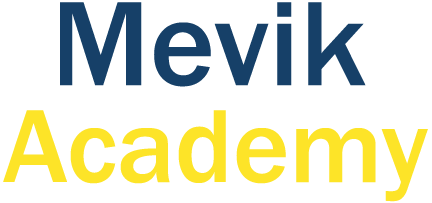IOT
IOT stands for the Internet of Things. It refers to the network of interconnected devices that are embedded with sensors, software, and other technologies to collect and exchange data over the internet. These devices can include everyday objects such as appliances, wearables, vehicles, industrial equipment, and more, which are capable of communicating with each other and with humans.
The concept of IoT revolves around the idea of connecting physical objects to the internet to enable them to communicate, share data, and perform tasks autonomously. This allows for increased automation, efficiency, and convenience in various industries and everyday life.
IoT has the potential to impact numerous sectors, including healthcare, transportation, agriculture, manufacturing, smart homes, smart cities, and more. IoT technologies enable data-driven decision making, remote monitoring and control, predictive maintenance, improved safety and security, and enhanced customer experiences, among other benefits.
Some common examples of IoT in everyday life include smart thermostats, fitness trackers, connected cars, smart appliances, and wearable devices. In industrial settings, IoT can be used for remote monitoring and control of machinery, supply chain optimization, asset tracking, and predictive maintenance.
However, as with any technology, IoT also presents challenges such as security concerns, data privacy issues, and interoperability among different devices and platforms. Hence, proper planning, design, and implementation of IoT solutions are important to ensure their effectiveness, security, and privacy.
Overall, IoT is a rapidly growing field that has the potential to revolutionize industries and transform our daily lives by creating a more connected and automated world.
IOT & Its Implications
Smart Homes
IoT enables the automation and remote control of home devices such as thermostats, lighting systems, security cameras, and appliances, making homes more convenient, energy-efficient, and secure.
Industrial Automation:
IoT is used in industries for remote monitoring and control of machinery, predictive maintenance, supply chain optimization, inventory management, and process automation, leading to increased efficiency and reduced downtime.
Healthcare
IoT is used in healthcare for remote patient monitoring, telemedicine, wearable health monitoring devices, and smart medical devices, helping to improve patient outcomes, reduce healthcare costs, and enhance patient care.
Smart Cities
IoT is used in smart city applications such as traffic management, public transportation, waste management, smart grids, and environmental monitoring, aiming to make cities more sustainable, efficient, and livable.
Agriculture
IoT is used in agriculture for smart farming, precision agriculture, crop monitoring, livestock tracking, and irrigation management, helping farmers optimize crop yield, reduce resource waste, and improve farm management practices.
Environmental Monitoring
IoT is used for environmental monitoring applications such as air quality monitoring, water quality monitoring, and wildlife tracking, helping to better understand and manage environmental conditions.
Why Clients choose us
Start with Fundamentals
Begin by explaining the basic concepts of IoT, including its definition, components, architecture, and key technologies such as sensors, actuators, connectivity, and cloud computing. Provide a solid foundation of knowledge before moving on to more complex topics.
Read MoreAssessment and Feedback
We provide regular assessments, feedback, and evaluations to gauge students' understanding of the concepts and their progress. Use a variety of assessment methods such as quizzes, assignments, projects, and presentations to assess different aspects of learning. Provide constructive feedback to help students improve their understanding and skills.
Read MoreReal-world Examples
Use real-world examples and case studies to illustrate the practical applications of IoT in different industries and sectors. This can help students connect the theoretical concepts with real-world scenarios, understand the impact of IoT in various domains, and inspire them to think critically and creatively about potential IoT solutions.
Read MoreFlexibility and Adaptability
We are flexible and adaptable in your teaching approach as IoT is a dynamic field that constantly evolves. Adjust the curriculum, teaching materials, and learning activities based on the changing landscape of IoT and the unique needs of your students.
Read MoreCollaborative Learning
We encourage collaborative learning through group projects and team-based activities. This can simulate real-world IoT development scenarios where students learn to work in teams, communicate effectively, and solve problems collectively. Collaborative learning also promotes peer-to-peer knowledge sharing and fosters a supportive learning environment.
Read MorePractical Implementation
We encourage students to implement their IoT projects in real-world settings, such as internships, capstone projects, or industry collaborations. This will provide them with practical experience, apply their learning to real-world scenarios, and boost their employability in the IoT job market.
Read Morestrategy development
Demand of IOT
Digital Transformation
Organizations are increasingly adopting IoT as a part of their digital transformation initiatives to optimize their operations, improve customer experiences, and gain a competitive edge. IoT enables businesses to gather data from connected devices, analyze it, and derive insights for informed decision-making, which is in high demand across industries.
Consumer Applications
IoT is also making its way into consumer applications, such as smart homes, wearables, connected cars, and smart appliances. Consumers are adopting these IoT devices and services for convenience, safety, and efficiency, which is driving the demand for IoT-enabled consumer products.
Emerging Technologies
IoT is closely connected to other emerging technologies such as 5G, edge computing, blockchain, and augmented reality (AR)/virtual reality (VR). The convergence of these technologies with IoT is creating new possibilities and driving the demand for integrated solutions that harness the power of multiple technologies.
Security and Privacy
As IoT deployments continue to grow, the need for robust security and privacy measures becomes paramount. Organizations and consumers are demanding secure and privacy-conscious IoT solutions to protect their data and ensure the integrity of their connected devices and systems.
